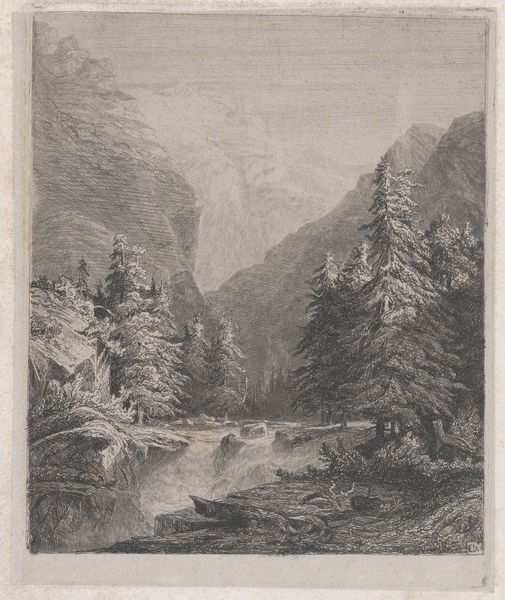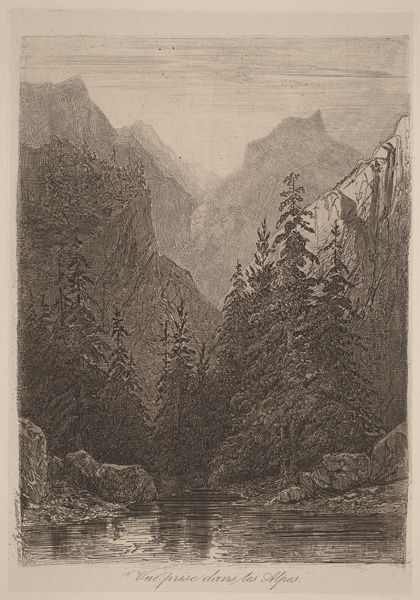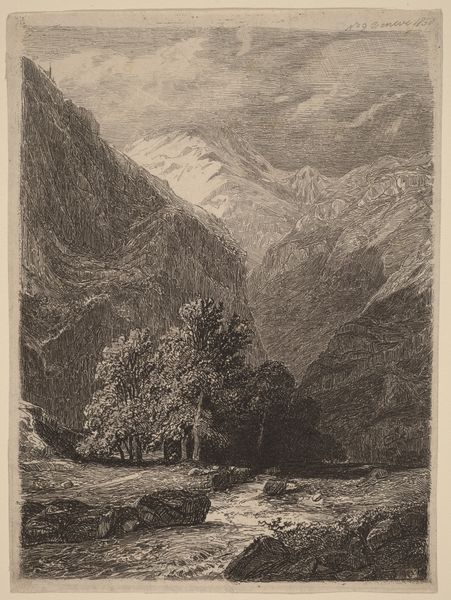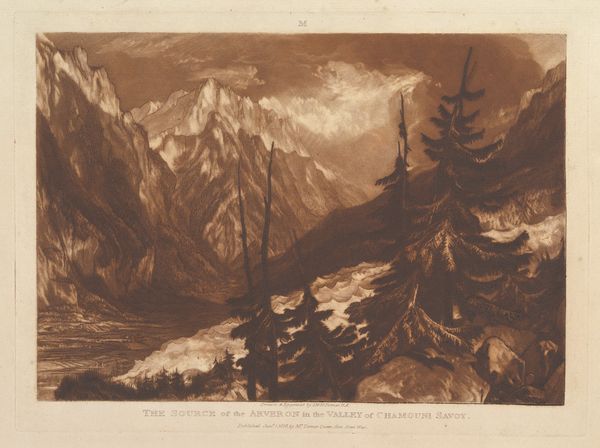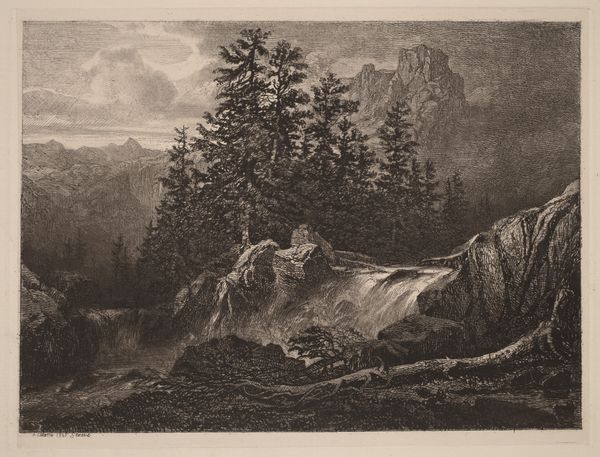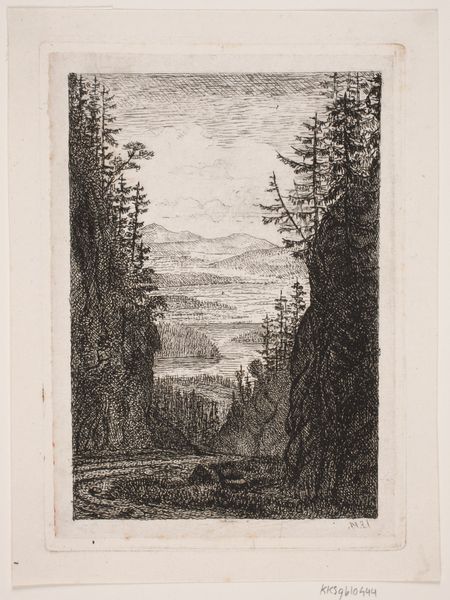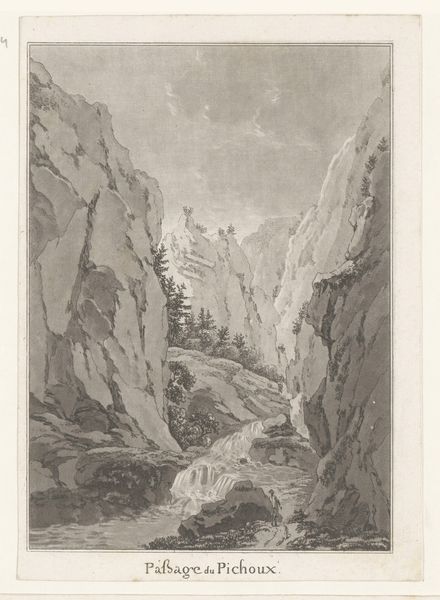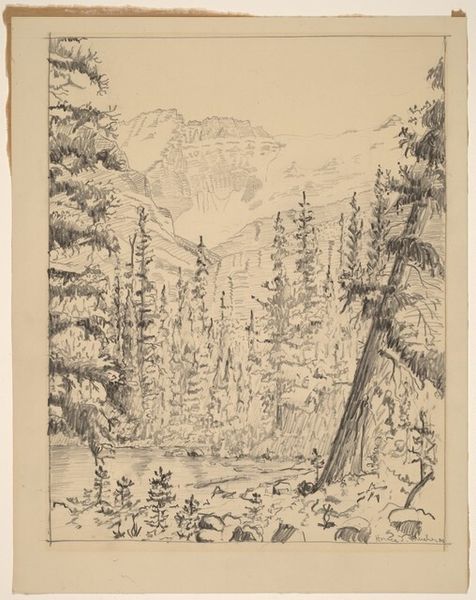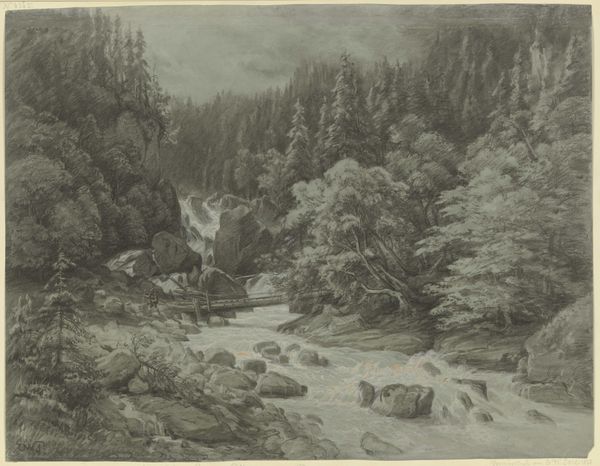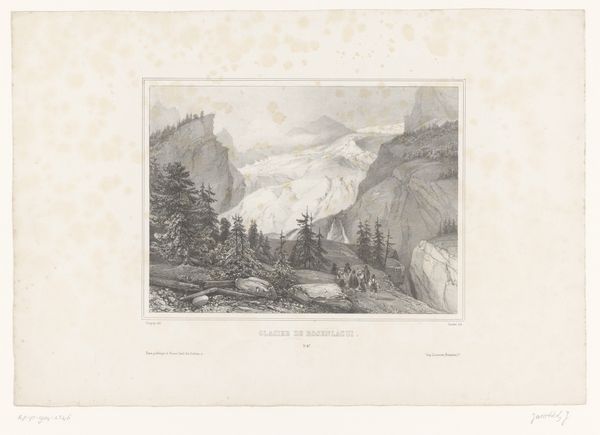
print, etching
# print
#
etching
#
landscape
#
romanticism
#
line
Dimensions: plate: 14.9 x 10.9 cm (5 7/8 x 4 5/16 in.) sheet: 35.5 x 27.2 cm (14 x 10 11/16 in.)
Copyright: National Gallery of Art: CC0 1.0
Editor: So this is Alexandre Calame’s "Mountain Meadow," an etching from 1840. The stark lines make the landscape feel so rugged and remote. What does this work say to you? Curator: Well, given its place in history, it speaks volumes about the romantic idealization of nature during the 19th century. Landscapes weren’t just pretty pictures, but potent symbols. What role do you think the emerging culture of tourism played at this time? Editor: I see your point. The Romantics’ were keen on depicting nature as sublime, to showcase it's vastness. Tourism brought more and more people into previously untouched natural areas, didn't it? Curator: Exactly. This etching, multiplied through printmaking, circulated images of idealized landscapes widely. It reinforced a specific vision of the Alps. Who controlled and consumed these images, and what did that imply? Editor: So, this piece reflects a specific viewpoint linked to access, class, and how landscapes were presented to a broader audience? It is not a natural reflection but it is curated. Curator: Precisely. Consider how this image might have shaped the perception of nature for urban audiences who had limited access to such scenes. It created a desire, an expectation of what the "Mountain Meadow" should be, and still resonates today, perhaps. Editor: So the very act of representing the meadow changes how we perceive the actual location and our expectations. Curator: Indeed. Understanding its social and historical context invites us to critically examine our own views. It certainly helps us see landscapes with different eyes. Editor: That’s really given me something to think about – it's more than just lines on paper; it's a reflection of broader cultural forces shaping our understanding of the natural world. Thanks for that.
Comments
No comments
Be the first to comment and join the conversation on the ultimate creative platform.

